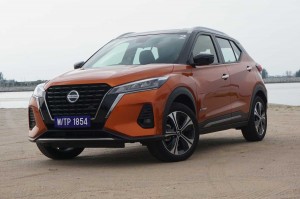BOLOGNA: Sixty years ago an argument between a famous Italian sports car maker and a disgruntled customer led to the establishment of a company that grew to challenge its illustrious rival.
It was May 7, 1963, when tractor builder and air-conditioning producer Ferruccio Lamborghini founded his sports car company, motivated by anger at the condescending attitude of Enzo Ferrari.
Fed up with the many small defects of his Ferrari 250 GTO, Lamborghini went to see Enzo in Maranello to lament his woes and make a few suggestions for improvements.

The Commendatore, however, was unimpressed and he chased Lamborghini away, telling him to continue working on his tractors and to leave sports car building to people who knew how to do it.
Stubborn as the bull that Lamborghini subsequently made the company trademark, he refused to accept this affront and, just 20km from Ferrari in Sant'Agata, laid the foundations for his own sports car company.
Lamborghini's first car, the 350 GT, was released in 1964 and achieved respectable success. It was immediately accepted as a Ferrari alternative, says Frank Wilke of car market observer Classic Analytics.
But like its successor, the 400 GT, its fame is usually eclipsed by the cars that came after: the Countach, the Diablo, the Murciélago and, above all, the Miura.

Created by the up-and-coming star designer Marcello Gandini, the Miura debuted at the Geneva Motor Show in March 1966.
"The Miura is considered the world's first super sports car and stole the show from the Ferrari Daytona in terms of design and performance," says Wilke.
The 3.9-litre V12 engine produced 257 kW/350 hp right from the start and later 283 kW/385 hp in the Miura SV. The car could reach an unheard-of 300 km/h when drivers of Porsche 911s had to make do with 96 kW/130 hp and 210 km/h. That speed didn’t come cheap though — a Miura costs as much as three and a half 911s.
While today Lamborghini’s designs are governed by aerodynamic considerations, the Miura has an animalistic look.

The tilting headlights are reminiscent of the eyes of frogs or crocodiles while the black ribs on the frame of the front side windows not only conceal the door closers, but also imitate the horns of a bull.
Even the name on the car’s rear is rendered in such a way that two horns grow out of the M and a tail out of the A.
Inside, the focus is solely on driving. There are two steering column levers and a few vital instruments in the centre console, which protrudes into the cockpit like an overhanging rock face.
The switches for the power windows and the tilt headlights are as rough as building blocks and the exterior mirror looks like an ice cream cone stuck on the bodywork.

You have to be pretty agile to even get into this low-to-the-ground supercar. The seating position is reminiscent of parents' evening in kindergarten, so dainty are the seats, except that you almost have to lie in them to get your head into the cabin, while at the same time you’re almost strangled by the belt anchored in the roof.
If you're taller than 1.70 metres, you have to spread your legs like a frog, because otherwise they won't fit around the huge, spindly steering wheel. And the pedals are so high in the footwell that those with larger feet can find them getting caught under the dashboard when they use the clutch.
You quickly learn that suffering goes hand in hand with thrills when you drive the Miura, which makes it all the more satisfying to tame this bull. To do so, you have to turn into a matador and fight each curve.

Even starting the engine takes practice, because the V12, which is behind a wall of sheet metal and Plexiglas at the driver’s back, otherwise tends to die.
That's why you have to keep it revved up before takeoff and release the heavy clutch with as light a foot as possible. If you succeed you’ll immediately find yourself flying towards the horizon.
The Miura accelerates so fast that the Italians have deleted the first 40 km/h on the speedometer and instead push the scale up to 320 km/h at the other end.
Even in first gear, the tachometer climbs above 5,000 rpm and after less than seven seconds you’re going at 100kph while you strong-arm the gearbox with your right hand and firmly hold the steering wheel with your left to keep the car on track.

It's not the first Lamborghini, nor the most powerful, nor the most famous, nor even the rarest, even though just 763 examples were built between 1966 and 1973.
But the Miura is by far the most beautiful and, for many, also the most spectacular sports car in the 60-year history of this Ferrari competitor — and therefore correspondingly valuable, Wilke says.
While the first 350 GT can be bought today for €740,000/US$824,000, the most basic version of a Miura costs €1 million/US$1.1 million and the ultimate SV version around €2.4 million/US$2.7 million.














